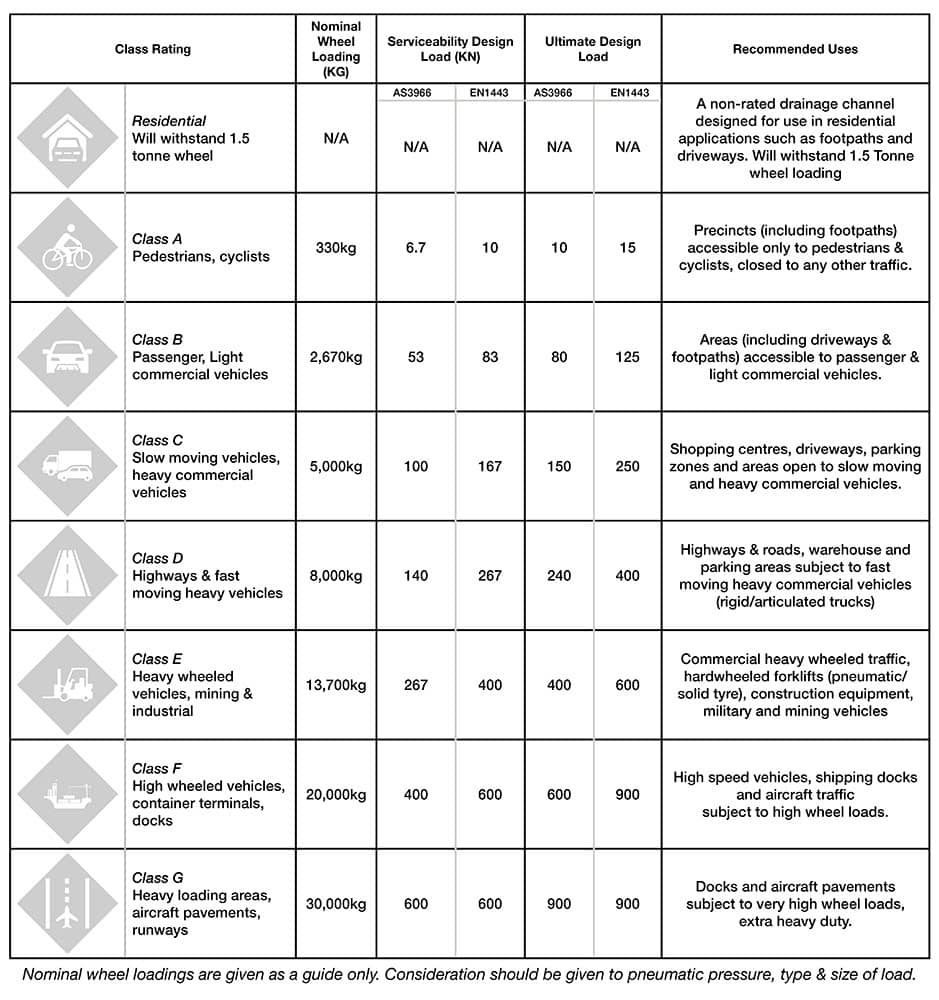Technical Specifications

What is Nominal Wheel Loading?
The nominal wheel loading refers to the weight of 1 wheel of the vehicle.
For example, if you estimate the heaviest vehicle that will be driving over the drain weighs 2215kg. The nominal wheel loading is 553.7 kg (2215 ÷ 4 = 553.75). Therefore you will require a Class B rated grate (Class B nominal wheel loading is 2670kg).

Load Classifications
EN 1433:2008
The only standard that is internationally recognised for the regulation of the production and marking of drainage channels is the European Standard, EN 1433:2008. This standard defines a DRAINAGE CHANNEL as:
A linear drainage assembly composed of prefabricated units permitting the collection and conveyance of surface water along its total length when installed within areas subjected to pedestrian and/or vehicular traffic.
The standard specifies definitions, classes, design and testing requirements, markings and quality controls necessary to meet the requirements of the mandate given under the EU Construction Products Directive (89/106/EEC).
This offers a testing method that is able to test both the grate and channel body.
AS 3996:2019
The Australian Standard – AS 3996 2019 only specifies the requirements for access covers and grates for the use in vehicular and pedestrian areas. This covers the strength of the trench grate only and not the complete unit or hydraulic design.
SABDRAIN’S commitment to quality and reliability uses the European Standard EN 1433:2008 as the minimum requirement for the relevant designing and manufacturing criteria for its range of drainage channels and grates. This is further backed up by its Corporate Certification ISO 9001:2008, independent product testing by Bureau Veritas for Product Conformance and testing by the M.Masini Research and Testing Institute for CE Conformity.
The CE marking of the drainage channels acts as a guarantees for the customer that the product meets the requirements as set out in the Standard EN 1433 :2008.

Wheelchair & Walking Cane Compliance
AS1428.2 Clause 9 Ground and floor surfaces, specifies grate requirements.
‘If gratings are located in a walking surface, they shall have spaced no more than 13mm wide and no more than 150mm long. If gratings have elongated openings, they shall be placed so that the long dimension is transverse to the dominant direction of travel’